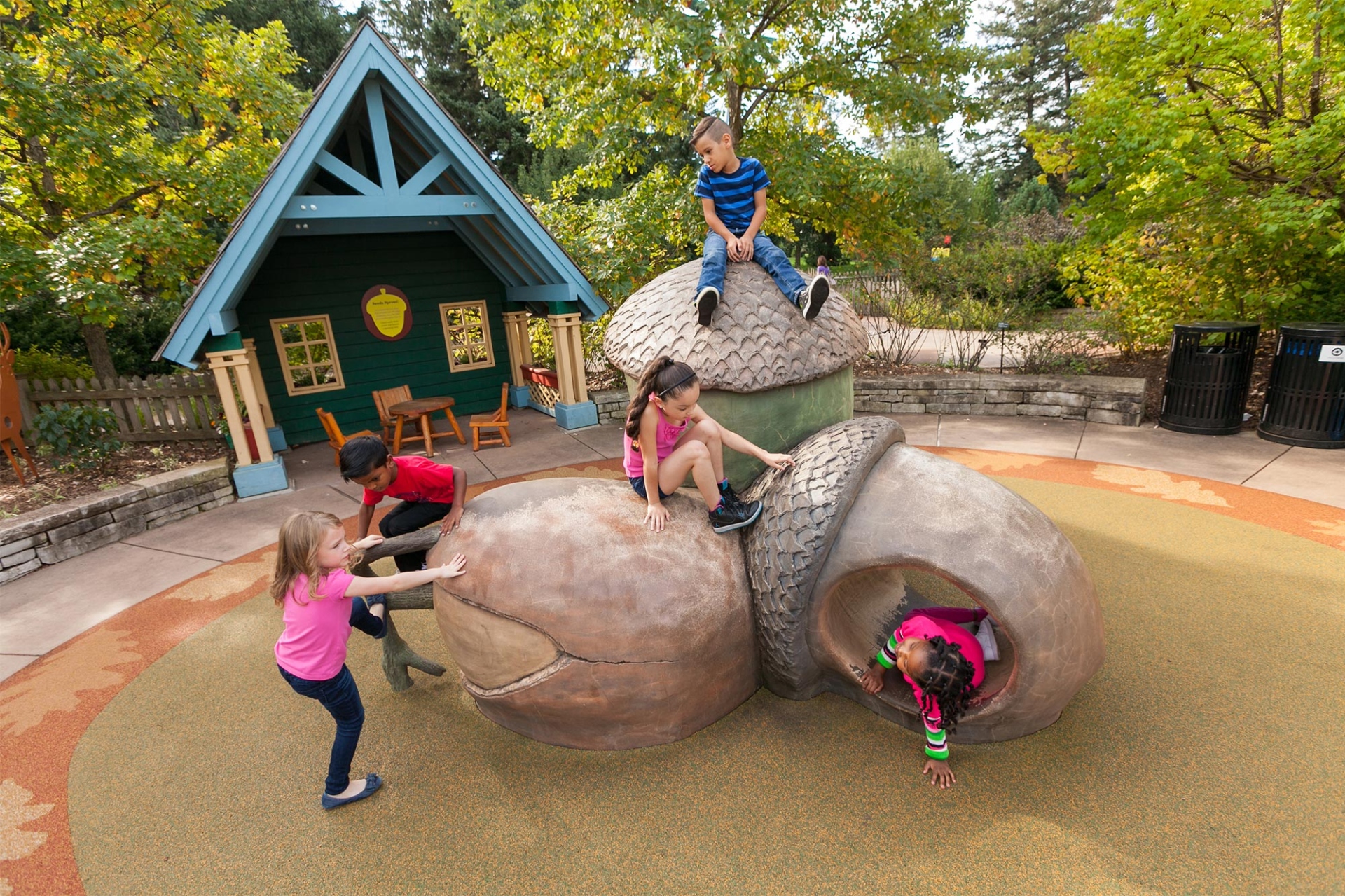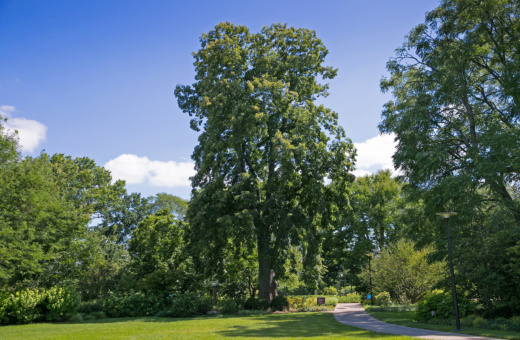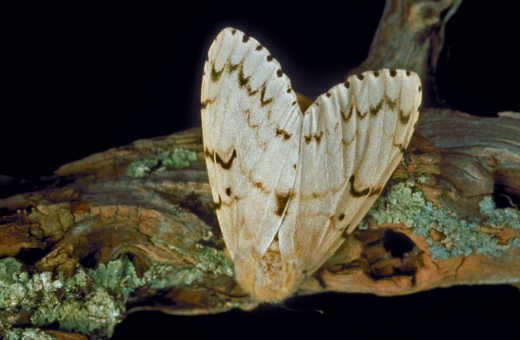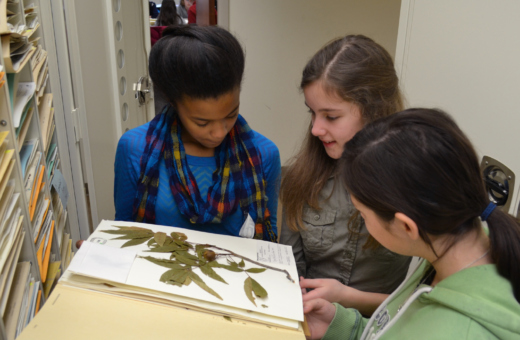A World of Wonder and Play Turns 20
A small child peers curiously into a giant flower. Another dams up a meandering waterway that is designed for playing and splashing. Others climb on a giant acorn (above) or worm through a huge snarl of make-believe tree roots. Older children build towers of logs or run joyfully up a boardwalk into the trees. A toddler stands transfixed as a butterfly flits by. The Children’s Garden of The Morton Arboretum is doing its work.
For 20 years, this lush, rambling 4-acre outdoor play space has been welcoming children and their families for hands-on play that sparks love for the outdoors. “It was designed as a safe place where kids could start a lifelong relationship with nature,” said Jeremy Joslin, director of education and interpretation.
By any measure, the garden has been a resounding success. Roughly a third of the Arboretum’s million-plus yearly visitors go to the garden. Some of the children who played in the garden when it was new now bring their own kids. “The Children’s Garden has become a keystone experience of The Morton Arboretum,” Joslin said.
The Children’s Garden is designed to foster independent exploration, within the confines of a safe environment. Children feel empowered to follow their curiosity, and “the grownups have peace of mind, knowing that their children can’t run out,” said Emilian Geczi, manager of early childhood programs.
The children come to play. For them, playing is serious business: Their bodies are developing and they are exploring their abilities, using all their senses, learning to observe and inquire, handling new experiences, becoming comfortable with the outdoors, and growing curious about other living things. Their play is what educators call a process of sensory self-discovery that develops their gross motor skills.
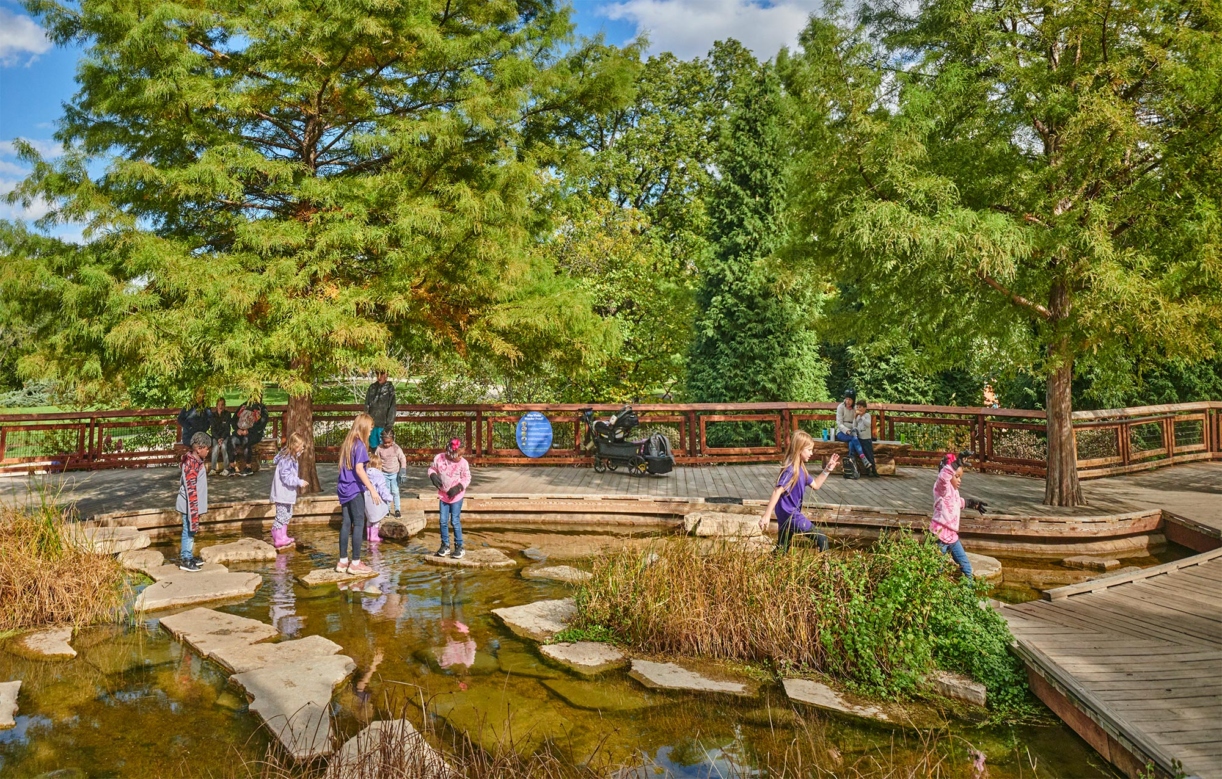
The garden is designed to encourage children to play independently and develop a relationship with nature.
Although adventurous parents and children have visited the Arboretum for hikes and outdoor explorations since it was founded in 1922, the Children’s Garden was designed to be a welcome to nature for a wider range of families. It’s worked. In 2003, before the garden opened in 2005, the Arboretum had just 18,000 members and 345,000 visitors; in 2024, it had more than 55,000 members and more than one million guests.
For the Arboretum, the garden has been an investment in the future of people and trees. “Playing in the Children’s Garden sows seeds for later learning about how to protect nature and the environment,” Geczi said. “Eventually, those seeds can sprout into taking action.”
Many people who come for the Children’s Garden have gone on to explore far more of its landscapes and programs, becoming supporters of the Arboretum and its conservation mission.
The garden has changed along with the Arboretum in its two decades. The small, just-planted trees that can be seen in early photos have now grown tall, their shady branches meeting overhead. It feels like the entrance to an enchanted forest, with winding paths that invite exploration, shady glades, sunny lawns, and bright gardens. There are flowerbeds, a vegetable patch, and shrubs that are bright with bloom in spring and colorful leaves in fall.
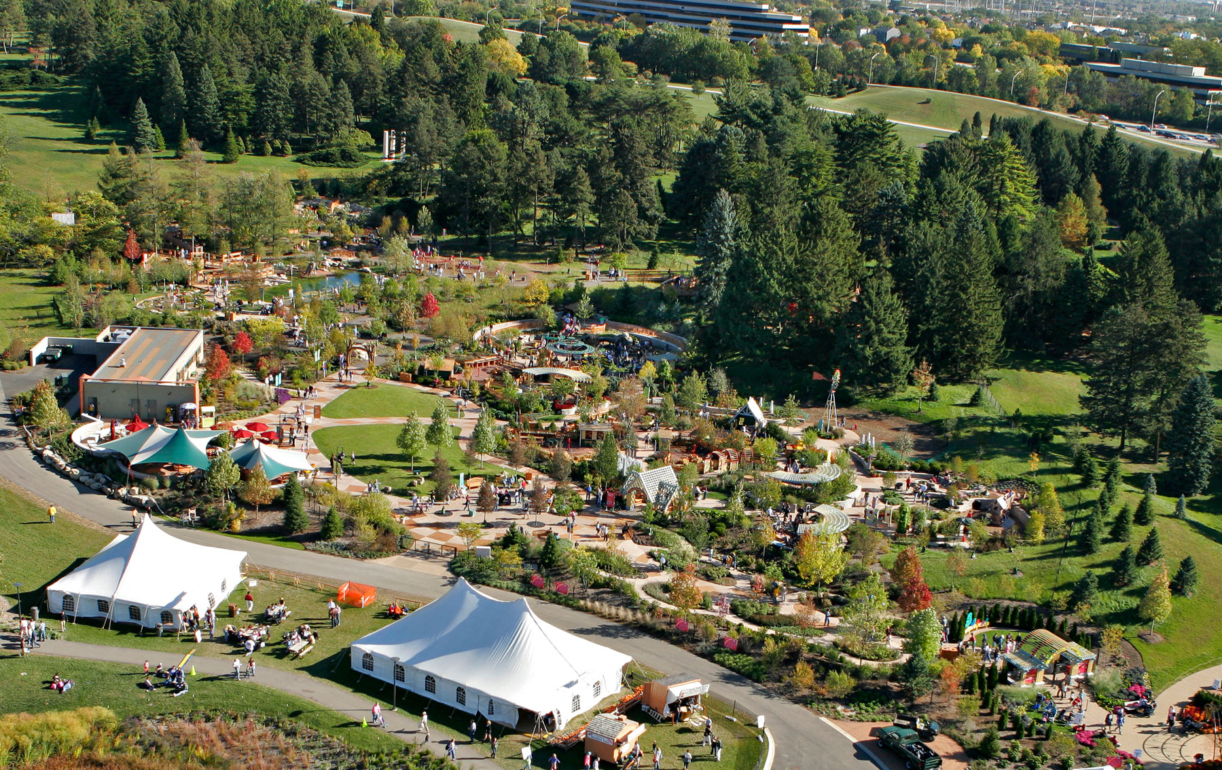
Its trees and experiences have grown and changed since the Children’s Garden was new 20 years ago.
Nature has woven itself into the Children’s Garden in other ways. When Wonder Pond was new, toads decided for themselves that it was a perfect place to lay eggs, and every spring since, their tadpoles have been one of the garden’s highlights. Children are encouraged to splash in and watch the tadpoles or try to catch them—as long as they put them back. The pond also attracts bullfrogs, ducks, and other living things.
The Loose Parts play area, full of tree parts to play with, has been a big hit since it was introduced a few years ago. “It’s a place where kids can move things around and get their hands dirty,” Joslin said. All the tree parts—logs, slabs from tree trunks, stumps—are byproducts of the Arboretum’s work to maintain its trees.
There are endless possibilities in this super-playground for children of every age. The Backyard Discovery Garden is designed for small children, with plenty of things to touch, wiggle, clamber on, splash in, and figure out. Older children can make longer forays into Adventure Woods, where they can run, hide, climb, swing, and build. A large climbing structure, new in 2025, has ropes and swings. Everybody loves Wonder Pond, where dragonflies swoop, minnows dart, and children are welcome to wade in the cool water and feel tiny things nibbling on their toes. The gardens that surround every play area are full of interesting things to see and feel, such as pussy willows in spring.
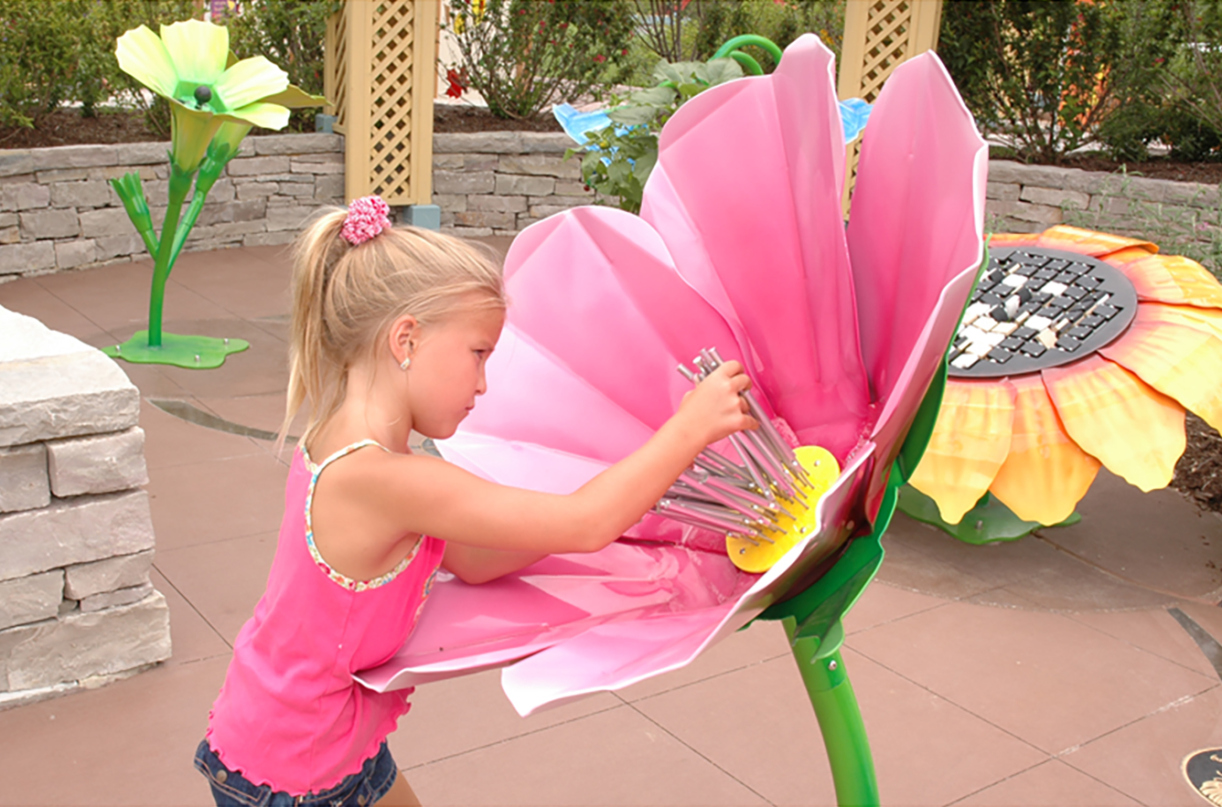
There are places designed for children of every age, full of things to explore and discover.
There are so many places to spread out that even on summer weekends, “You can always find a quiet spot,” Geczi said. Because every space is surrounded by living, growing trees and plants, the garden is new with every visit, even in winter. It is free with Arboretum admission and is open from 10:00 a.m. to 5:00 p.m. (10:00 a.m. to 4:00 p.m. in winter) every day except Christmas, weather permitting.
The Arboretum has developed many guided programs in the Garden over its first two decades. Among the newest is a drop-off class called Curiosity Woods that offers young children the freedom to learn in an environment filled with wonder and new discoveries every day. Through the Youth Volunteer Program, teenagers, many of whom grew up playing in the Children’s Garden, help care for it and provide programming to the next generation.
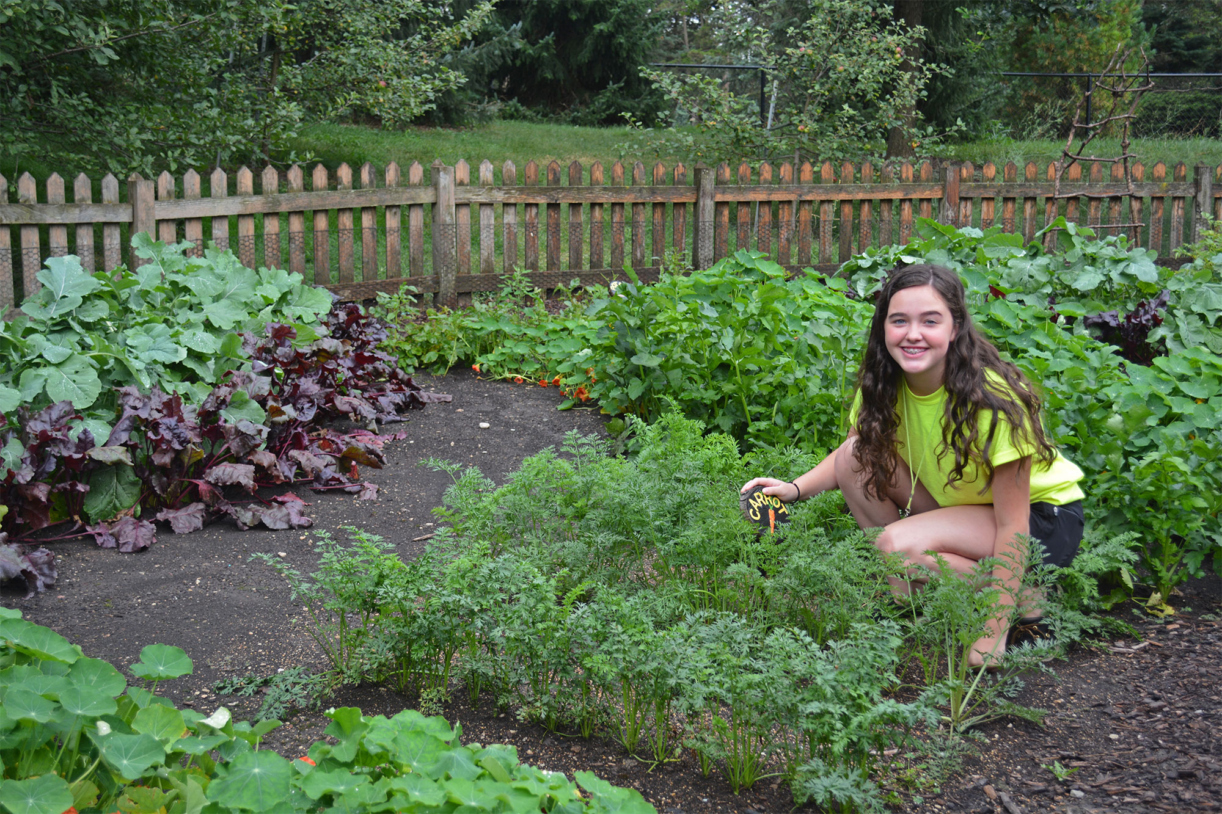
Youth volunteers, many of whom grew up playing in the Children’s Garden, help care for it and run its programs.
To make it easy to stay in the garden for hours on end, there are a shady pavilion with picnic tables and fully accessible family restrooms.
Accessibility was built into the garden from the beginning, with paved walkways and ramps. Improving that accessibility is an ongoing priority. A number of tools, such as a kit for children with sensory processing needs, are available to help families with special needs. The staff is also available to work with families to find ways for children to enjoy the garden.
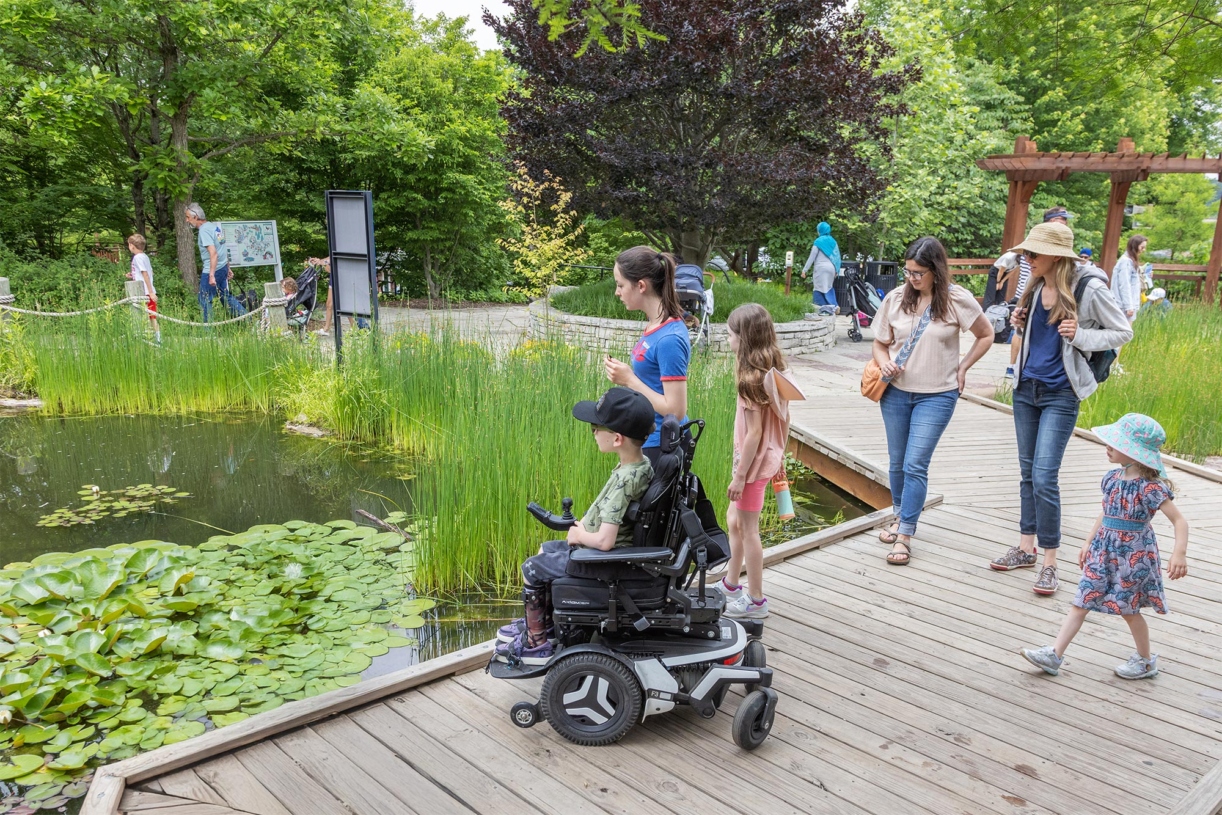
The garden was designed to be accessible so all children can play and its accessibility is always being improved. For example, a boardwalk was added to allow wheelchairs near Wonder Pond.
A great deal of work goes into providing all these joyful experiences. Some 200 volunteers assist a staff of eight in making families welcome, including two horticulturists for the trees, plants, and gardens.
Tens of thousands of families come to the Children’s Garden to share the outdoors, take nature into their lives, and see their children’s eyes fill with little moments of wonder.
“There have been changes to the garden and there will be more,” said Joslin. “But the soul of what children do here, and what the garden does for children, has not changed.”
